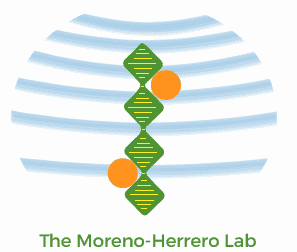Understanding the paradoxical mechanical response of in-phase A-tracts at different force regimes

Alberto Marin-Gonzalez, Cesar L Pastrana, Rebeca Bocanegra, Alejandro Martín-González, J G Vilhena, Rubén Pérez, Borja Ibarra, Clara Aicart-Ramos, Fernando Moreno-Herrero
A-tracts are A:T rich DNA sequences that exhibit unique structural and mechanical properties associated with several functions in vivo. The crystallographic structure of A-tracts has been well characterized. However, the mechanical properties of these sequences is controversial and their response to force remains unexplored. Here, we rationalize the mechanical properties of in-phase A-tracts present in the Caenorhabditis elegans genome over a wide range of external forces, using single-molecule experiments and theoretical polymer models. Atomic Force Microscopy imaging shows that A-tracts induce long-range (∼200 nm) bending, which originates from an intrinsically bent structure rather than from larger bending flexibility. These data are well described with a theoretical model based on the worm-like chain model that includes intrinsic bending. Magnetic tweezers experiments show that the mechanical response of A-tracts and arbitrary DNA sequences have a similar dependence with monovalent salt supporting that the observed A-tract bend is intrinsic to the sequence. Optical tweezers experiments reveal a high stretch modulus of the A-tract sequences in the enthalpic regime. Our work rationalizes the complex multiscale flexibility of A-tracts, providing a physical basis for the versatile character of these sequences inside the cell.
